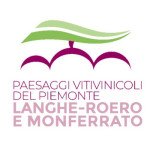Comune Mornese
Useful services
via Doria, 49 - 15075 Mornese (AL)
Tel. +39 0143 887858
E-mail: info@comune.mornese.al.it
http://www.comune.mornese.al.it
The town is mentioned in an 11th century document with the name of Maurenico: a second hypothesis shows that the ancient name of Mornese was Molonesio, a reference to Mulio, which hypothesises the foundation by Genoese mule drivers. In the mid-13th century, the village was the fiefdom of the Rosso della Volta and owned by the Visconti. After many vicissitudes, it passed to the Doria family and, later, to the Serra family. In the 18th century, it became part of the Savoy state and after several changes of ownership returned definitively to the Doria. The Castle was rebuilt by the Genoese in the 15th century, but it presents characteristics typical of the castles of Monferrato, such as the single block, the height and the large windows. The current appearance dates to the 18th-century modifications when it was converted into a residence. The parish church of San Silvestro, built in the late 16th century, stands a short distance away; it was modified during the centuries, and the lateral naves were built and the apse enlarged in the 1800s. At the side of the Parish church rises the Oratory of the Annunziata; the building, enlarged in 1828, preserves the statue of the Immaculate Conception and a processional crucifix of the 18th century. The house where Saint Maria Mazzarello was born is located in the hamlet of Mazzarelli. The College was the first motherhouse of the Daughters of Mary Help of Christians, the religious congregation founded by Don Bosco and Maria Mazzarello who, together with her fellow sisters, moved here in May 1872. The building is now a home of Spirituality and Hospitality. The Chapel of the College is inaugurated in 1995; the building preserves the small room, occupied by the Saint from 1872 to 1879. This is also the site of the temple, consecrated on 4 August 1972 and the church, dedicated to Mary Help of Christians and the Saints Stephen and Lawrence, built as a sign of gratitude for the protection during the cholera epidemic of 1835.















